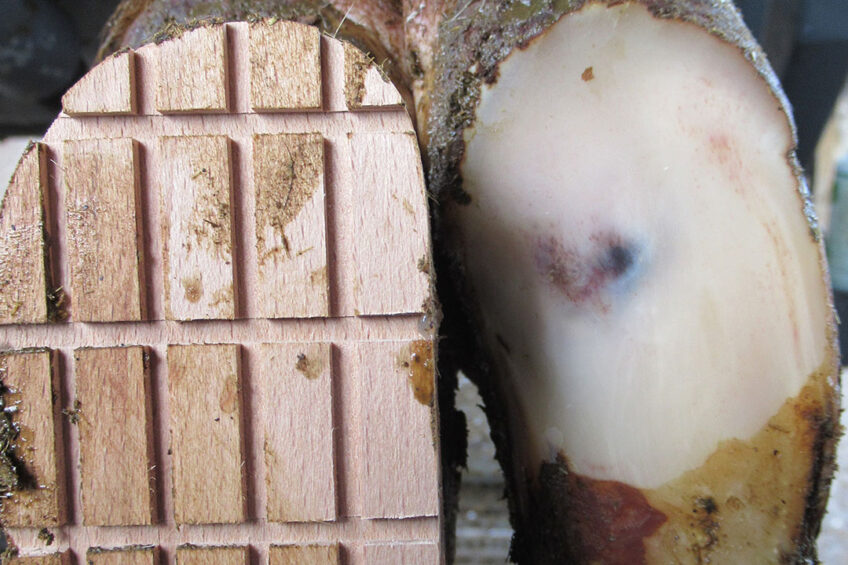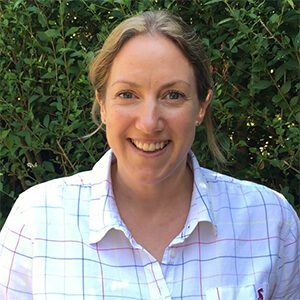Dairy cow trim visit: How to get your money’s worth

Dairy farmers in Great Britain receive regular visits from the foot trimmer, as part of lameness management. But which factors can play a part in whether it’s money well spent?
A recent survey of dairy farmers in Great Britain showed that the majority are having regular visits from their foot trimmer as part of their lameness management plans. However, when it comes to return on investment, there are a number of factors that can influence whether it’s money well spent. We take a look at some of these factors.
Are your trim visits reactive or proactive?
It has always been the case that prevention is better than cure and this couldn’t be truer when it comes to lameness. Previous lameness history is a huge driver of overall lameness on a farm and research has shown that up to 80% of lameness cases can be attributed to a previous case of lameness. It is often a case of ‘go lame; stay lame’ so we need to make sure that we break the cycle and make sure we focus on stopping cows going lame in the first place. So how do we do that?
There are only so many cows that can be trimmed during a visit and so it is important to prioritise when deciding which ones to select for trim day. There will always be a trade-off. However, the focus should be on maximising the benefit of each ‘trim slot’ and that will come from preventing future cases of lameness and treating new, early cases. Yes, we still need to be mindful of cow welfare and ensure that severe cases are treated. It goes without saying, however, that these cases shouldn’t be waiting for trim day anyway and instead should be treated as soon as they are identified.
Therefore, it would be logical that the best time to preventively trim a cow is at the end of her lactation.”
When it comes to the evidence base around the best timing to undertake preventive hoof trimming the evidence is a little sparse. However, if we think about the critical time for lameness risk, it all points to calving. This is the time when several changes happen within the cow’s feet that predispose her to the development of claw horn lesions. These include inflammation, relaxation of the ligaments and structures that fixate the pedal bone in place in the foot, a reduction in the volume of the protective digital cushion, a reduction in horn quality and reduced lying times. As a result, the foot is at its most unstable in the weeks before and after calving. However, we generally don’t see the result of this until much later once the cow has gone lame and a visible lesion has developed.

Therefore, it would be logical that the best time to preventively trim a cow is at the end of her lactation so that the foot is in as good a shape as possible before this risky period and the available research backs this up, too. Research from the University of Liverpool also found that herds that implement an additional trim in early lactation (e.g. 60-90 days in milk) had lower levels of lameness in the herd as well. This could be a result of intervening before the problem manifests.
So when you are deciding whether to bring in the same cow for her 10th visit to the trimmer this year, consider whether you should instead be focusing on keeping your cows sound and invest in preventive trimming.
A good indication that you are catching your lame cows at the right time is when a bruise has just started to develop.”
‘Not walking quite right’ vs ‘lame’
Unfortunately, by the time a cow is showing obvious signs of lameness we are already on the back foot when it comes to getting the most from our time, effort and investment in treatment. All the research shows that a delay of just a few weeks can have a huge impact on whether our treatment is a success or not. The earlier we treat a cow the more likely she is to recover quickly and the less likely she is to suffer a repeat case of lameness. If your new cases of lameness have white line lesions or sole ulcers then we are several weeks too late with our identification and treatment. A good indication that you catching your lame cows at the right time is when a bruise has just started to develop (see photo). These cows benefit from a trim, block and pain relief and can be expected to have a recovery rate of 85% after 6 weeks… left a couple of weeks and their chances of recovery plummet to 15% and their likelihood of becoming a chronic case increase dramatically. So next time consider if it really is worth waiting before you pull them out for the trimmer.
 Collaboration is key in tackling lameness
Collaboration is key in tackling lameness
The saying goes ‘there’s no I in team’ and this is never truer than when it comes to tackling lameness.
How do you know you’re getting the most from your trimmer?
Teamwork when it comes to trimming is key and providing lists for the hoof trimmer so that they know why cows are being presented helps. Providing key information such as their lactation, days in milk and any relevant lameness history or treatment can also be really valuable. Likewise, ensure that you receive information back about the cows seen at each trim visit so you can monitor lesions, check whether you are identifying cases of lameness early enough and make sure that cows are presented for rechecking when required. Trimming data also guides us as to where we need to focus efforts on improving the cows’ environment to help prevent lameness too.
It’s important to make sure you get the most out of your visits by selecting the cows that are going to benefit most.”
It’s important to make sure that when we’re going to the time and effort of trimming and treating cows that we are getting the results we should, but how do we know? It’s actually very difficult to know without regular mobility scoring and analysing the outcomes. However, if you have non-lame cows going lame within 4 weeks of the trim visit, this indicates that something could be wrong. Lame cows should also improve after treatment rather than take a step backwards. Don’t expect lame cows to go sound overnight, however, as this takes time and will also depend on their lameness history. Thin soles and toe necrosis in herds where excessive wear isn’t considered a problem can be an indication of over-trimming and can contribute considerably to new cases of lameness. Monitoring new cases and their trim history can be a quick check, but following outcomes over a longer period of time will provide further insight into whether you are seeing the true benefits from your trim regime.
 Automatic lameness detection in cows
Automatic lameness detection in cows
John Gardenier used commercial off-the-shelf Microsoft Kinect 3D cameras to set up a good working system of automatic lameness detection. Here we take a look at how Gardenier’s system works.
When the correct cows are selected and the correct techniques applied, hoof trimming can play a vital role in keeping a herd’s lameness levels in check. However, it’s important to make sure you get the most out of your visits by selecting the cows that are going to benefit most and making sure you monitor the outcomes. The new year is going to be an exciting time for lameness research which should enable us to further tweak trimming protocols for the benefit of the cow and therefore the industry.
Join 13,000+ subscribers
Subscribe to our newsletter to stay updated about all the need-to-know content in the dairy sector, two times a week.










